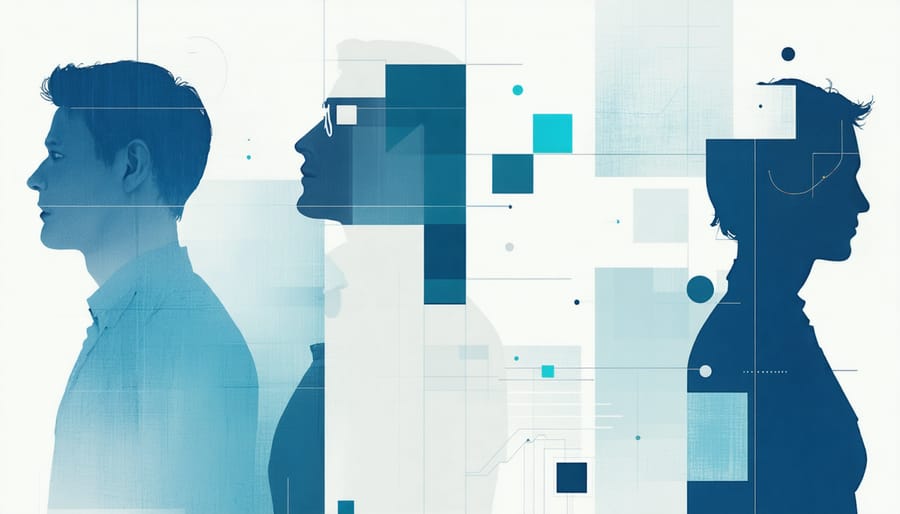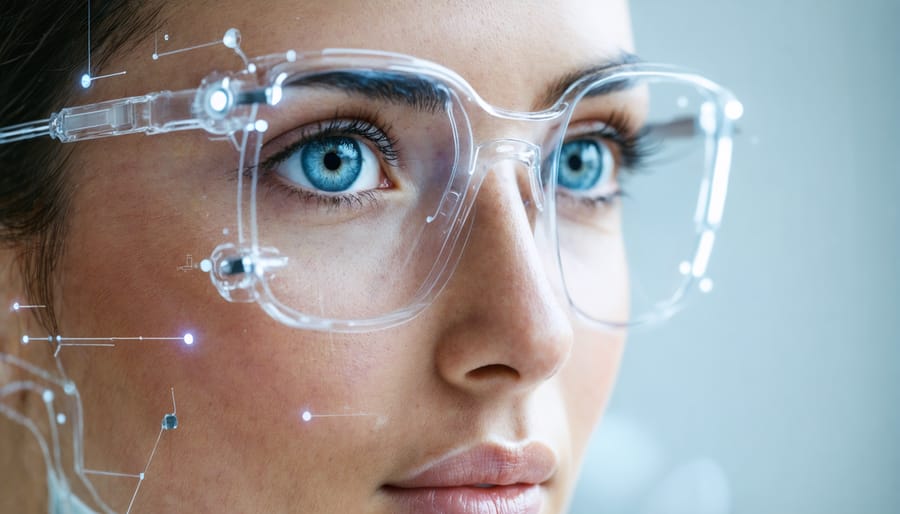Imagine walking into your doctor’s office and learning you’re at high risk for diabetes—not because you’re already sick, but because artificial intelligence analyzed your health data and spotted warning signs you couldn’t see. This is healthcare risk adjustment and predictive modeling at work, a revolutionary approach that’s transforming medicine from reactive treatment to proactive prevention.
At its core, risk adjustment uses algorithms to evaluate patient data—age, medical history, lifestyle factors, and clinical results—to predict future health outcomes. Think of it as a weather forecast for your health: instead of waiting for the storm to hit, doctors can see it forming on the horizon and help you prepare. Insurance companies use these models to estimate care costs, while healthcare providers leverage them to identify patients who need extra attention before problems escalate.
The technology combines traditional statistics with modern machine learning, analyzing patterns across millions of patient records to spot correlations humans might miss. When a 45-year-old shows specific biomarker combinations, the system might flag a 60 percent chance of cardiovascular issues within five years, prompting early intervention that could save their life.
This isn’t science fiction playing out in distant research labs. Healthcare systems are deploying these tools right now to reduce hospital readmissions, manage chronic diseases more effectively, and allocate resources where they’re needed most. For patients, this means more personalized care plans, earlier disease detection, and potentially avoiding serious health complications altogether.
Understanding how these predictive models work—and their limitations—empowers you to make informed decisions about your healthcare and appreciate the technology shaping your medical future.
What Healthcare Risk Adjustment Actually Means (And Why You Should Care)

The Traditional Way: Doctors Playing Detective
For decades, healthcare operated much like a detective novel where doctors pieced together clues after the crime had already occurred. When you visited your physician, they relied heavily on their experience, gut feeling, and whatever symptoms you presented that day. It was reactive medicine at its finest—waiting for something to go wrong before taking action.
Risk assessment tools were surprisingly basic. Doctors used simple checklists and statistical tables, asking questions like “Do you smoke?” or “Does diabetes run in your family?” They’d calculate your risk score using straightforward formulas, often missing the subtle patterns that emerge when you look at thousands of data points together.
Think of it like trying to predict the weather by just looking out your window. Sure, dark clouds might suggest rain, but you’re missing wind patterns, temperature changes, and atmospheric pressure that meteorologists use for accurate forecasting.
This traditional approach had significant limitations. By the time a patient showed clear symptoms of a chronic condition like heart disease or diabetes, irreversible damage might have already occurred. Healthcare systems spent enormous resources treating emergencies rather than preventing them, and many high-risk patients slipped through the cracks simply because their combination of risk factors didn’t fit the obvious patterns doctors had been trained to recognize.
Enter AI: Your Digital Health Guardian
This is where artificial intelligence transforms healthcare from reactive to proactive. Think of AI as a digital detective with a photographic memory, capable of analyzing millions of patient records in seconds to identify subtle warning signs that even the most experienced doctors might overlook.
Traditional risk assessment relies on doctors reviewing patient histories and applying clinical guidelines—a process limited by human memory and time constraints. AI risk assessment changes everything by processing vast datasets that include electronic health records, lab results, prescription histories, and demographic information simultaneously.
Here’s what makes AI special: it spots patterns across seemingly unconnected data points. For example, AI might notice that patients taking a specific medication combination, living in certain zip codes, and having particular lab values face higher diabetes risks—connections too complex for manual analysis.
Machine learning algorithms continuously improve as they process more data, becoming increasingly accurate at predicting which patients will develop chronic conditions, who might be readmitted to hospitals, or which individuals need immediate intervention. This isn’t about replacing doctors; it’s about giving them a powerful tool that amplifies their expertise and helps them focus attention where it’s needed most.
How Predictive Modeling Reads Your Health Story
The Data AI Uses to Predict Your Future Health
Predictive AI doesn’t rely on a crystal ball. Instead, it analyzes four main categories of information to forecast your health risks.
First, there’s your medical history: past diagnoses, medications, lab results, and hospitalizations. For example, if you’ve had high blood pressure readings over three consecutive years, the AI recognizes this pattern as a risk factor for heart disease or stroke.
Second, genetic information plays a growing role. If your DNA shows markers associated with certain conditions like diabetes or breast cancer, the model factors this inherited risk into its predictions. Think of it as the AI understanding your biological blueprint.
Third, lifestyle factors paint a picture of your daily choices. This includes data like whether you smoke, how often you exercise, your typical diet, sleep patterns, and alcohol consumption. Someone who logs 10,000 steps daily and doesn’t smoke presents a different risk profile than someone with a sedentary lifestyle.
Finally, and perhaps most surprisingly, social determinants of health matter enormously. These include your zip code, income level, education, and access to healthy food. Someone living in a neighborhood without grocery stores faces different health challenges than someone with easy access to fresh produce.
By combining these data streams, AI creates a comprehensive picture of your health trajectory, identifying risks before they become emergencies.
From Numbers to Insights: The AI Process Simplified
Think of machine learning in healthcare like teaching a highly observant student to spot patterns in medical data. Instead of manually reviewing thousands of patient records, AI models process this information systematically, learning from historical outcomes to predict future health risks.
The process begins with data preparation. The model ingests patient information—demographics, diagnoses, medications, and lab results—transforming this raw data into a format it can analyze. During training, the algorithm examines patterns from patients who previously developed conditions like diabetes or heart disease, identifying commonalities that human reviewers might miss.
For example, the model might discover that patients with a specific combination of blood pressure readings, medication patterns, and lifestyle factors face elevated risks. It assigns numerical weights to these factors, creating a sophisticated scoring system that measures risk probability.
Once trained, the model evaluates new patients by comparing their data against learned patterns. A patient named Sarah might receive a high-risk score for developing complications because her profile matches patterns the model associates with adverse outcomes. This generates actionable predictions that healthcare providers can use immediately.
The beauty lies in continuous learning. As the model processes more cases and outcomes, it refines its predictions, becoming increasingly accurate. What once required teams of analysts poring over spreadsheets now happens in seconds, transforming columns of numbers into meaningful insights that can save lives through early intervention.
Real-World Applications That Are Saving Lives Right Now
Catching Diabetes Before It Catches You
Imagine getting a warning light on your health dashboard years before diabetes actually develops. That’s exactly what modern predictive models are making possible. By analyzing patterns in your health records—factors like blood sugar trends, weight changes, family history, and even lifestyle data—AI predicts diabetes risk with remarkable accuracy, often 3-5 years before traditional diagnosis methods would catch it.
Here’s how it works in practice: The AI system examines thousands of data points from millions of patient records, learning which combinations of factors most reliably predict diabetes onset. When your doctor runs your annual checkup data through the system, it might flag you as high-risk even though your current blood sugar levels seem fine. This early warning creates a golden opportunity for intervention.
Armed with this prediction, you and your healthcare team can implement lifestyle changes—adjusting diet, increasing exercise, managing stress—that could prevent or significantly delay diabetes development. Studies show that catching pre-diabetes early and intervening can reduce progression to full diabetes by up to 58 percent. It’s healthcare’s version of seeing around corners, turning a future diagnosis into a preventable outcome.

Heart Disease: The Silent Killer That AI Can Spot Early
Heart disease remains the leading cause of death worldwide, yet it often develops silently over years without obvious symptoms. This is where AI-powered predictive models are making a life-saving difference. Unlike traditional risk assessments that might consider just a handful of factors like cholesterol and blood pressure, machine learning algorithms can simultaneously analyze dozens of variables—from medical history and lifestyle habits to genetic markers and even social determinants of health.
These systems work by learning patterns from millions of patient records, identifying subtle combinations of risk factors that human doctors might miss. For instance, an AI model might flag a patient whose blood work looks normal individually, but whose combination of stress levels, sleep patterns, and family history creates a concerning profile. Healthcare providers can then intervene early with lifestyle counseling, medication, or closer monitoring—often preventing heart attacks or strokes before they happen.
The technology essentially acts as an early warning system, helping doctors predict and prevent disease by catching cardiovascular risks years in advance. This proactive approach transforms heart disease from a silent killer into a manageable condition with proper early intervention.
Hospital Readmissions: Keeping You Home and Healthy
Imagine being hospitalized for a health issue, recovering, and heading home—only to find yourself back in the hospital days later. This revolving door scenario is unfortunately common, but predictive modeling is changing that story.
Hospital readmissions are costly, disruptive, and potentially dangerous for patients. Healthcare systems now use machine learning algorithms to analyze patient data and identify who’s most at risk of returning. These models examine factors like previous hospitalizations, chronic conditions, medication adherence, social support systems, and even transportation access to medical appointments.
Think of it as an early warning system. When the model flags a high-risk patient, healthcare teams can intervene before problems escalate. A patient with heart failure might receive home monitoring equipment, regular check-in calls from nurses, or assistance scheduling follow-up appointments. Someone struggling with multiple medications might get a simplified regimen or pharmacist consultation.
The results are impressive. Hospitals using these predictive tools have reduced readmissions by 20-30%, meaning patients stay healthier at home where they belong. It’s not just about saving healthcare dollars—it’s about improving your quality of life and preventing the stress and complications of unnecessary hospitalizations. This proactive, data-driven approach transforms healthcare from reactive treatment to genuine preventive care.
The Technology Behind the Magic

Machine Learning Models That Power Predictions
Healthcare organizations rely on several powerful machine learning models to predict patient risks, each with unique strengths. Think of these models as different types of experts on a medical team, each bringing specialized skills to patient care.
Regression models are like seasoned doctors who identify clear patterns between risk factors and outcomes. They excel at predicting specific numerical values, such as estimating how much a patient’s condition might cost to treat based on their age, medical history, and current symptoms. These models work best when relationships between factors are relatively straightforward and measurable.
Random forests operate like a panel of specialists voting on a diagnosis. This approach creates multiple decision trees, each analyzing patient data from slightly different angles, then combines their predictions for a more accurate assessment. They’re particularly effective at handling complex patient data with many variables, making them valuable for identifying patients at risk for hospital readmissions or complications.
Neural networks mimic how our brains process information through interconnected layers. Imagine them as pattern detectives that can spot subtle connections humans might miss. These models shine when analyzing intricate datasets like medical imaging or predicting rare disease combinations. They’re especially powerful for catching early warning signs in patients who might not fit typical risk profiles.
Each model brings something different to the table, and healthcare organizations often use combinations of these approaches to create the most accurate predictions possible, ensuring no patient falls through the cracks.
Natural Language Processing: Reading Medical Records Like a Doctor
Medical records tell rich stories, but much of that information lives in doctors’ handwritten notes, clinical observations, and narrative summaries rather than neat, structured data fields. This is where Natural Language Processing (NLP) becomes invaluable.
Think of NLP as teaching computers to read and understand medical documentation the way a doctor would. When a physician writes “patient reports frequent dizzy spells when standing,” NLP algorithms can extract key insights: the symptom (dizziness), its frequency, and the triggering condition (postural changes). This matters because these unstructured notes often contain critical details that structured data fields miss entirely.
For healthcare risk adjustment, NLP scans through thousands of clinical notes to identify mentions of chronic conditions, medication changes, or symptom progressions that might indicate escalating health risks. A 2022 study found that adding NLP-extracted information improved diabetes complication predictions by 23% compared to using structured data alone.
The technology works by breaking sentences into components, recognizing medical terminology, and understanding context. For instance, it distinguishes between “no signs of heart disease” and “signs of heart disease,” preventing dangerous misinterpretations. This comprehensive reading of patient histories creates a more complete picture, enabling more accurate risk predictions and better-targeted preventive care interventions.
The Privacy Question Everyone’s Asking
How Your Health Data Stays Protected
When healthcare providers use your information for risk adjustment and predictive modeling, multiple layers of security work behind the scenes to protect your privacy. Think of it like a security system with several locks on the door, each serving a different purpose.
First, encryption transforms your data into unreadable code during storage and transmission. It’s similar to sending a letter in a locked box where only authorized recipients have the key. Even if someone intercepts the data, they can’t decipher it.
Second, anonymization strips away identifying details like your name, address, and social security number before the data enters modeling systems. Analysts see patterns and predictions without knowing whose records they’re reviewing. Imagine taking labels off files in a filing cabinet so researchers can study trends without connecting information to specific individuals.
Third, HIPAA compliance creates strict legal requirements for healthcare organizations. The Health Insurance Portability and Accountability Act mandates safeguards, limits who can access patient information, and imposes penalties for violations. Healthcare providers must also obtain your consent before using your data and allow you to review how it’s being utilized.
Additionally, modern systems employ access controls, audit trails that track every data interaction, and regular security assessments to identify vulnerabilities before they become problems.
Bias in AI: The Challenge We’re Working to Solve
AI models in healthcare are only as unbiased as the data they learn from, and that’s where challenges emerge. If training data primarily includes information from certain demographic groups, the AI might not perform equally well for everyone. For example, a risk prediction model trained mostly on data from one ethnic group might underestimate health risks for patients from underrepresented communities.
This matters because biased algorithms could lead to some patients receiving inadequate care or insurance coverage. Researchers have discovered instances where healthcare AI systems showed different accuracy rates across racial and socioeconomic groups, potentially widening existing health disparities.
The good news? The medical AI community is actively addressing these concerns. Developers now prioritize diverse training datasets that represent various ages, ethnicities, genders, and geographical locations. They’re also implementing fairness audits—systematic checks that test whether models perform consistently across different population groups. Additionally, healthcare organizations are forming ethics committees to review AI systems before deployment, ensuring these powerful tools actually help everyone, not just some. It’s an ongoing journey, but one that’s essential for building trustworthy healthcare AI.
What This Means for Your Healthcare Future
Wearables and Continuous Monitoring
Your smartwatch knows more about your health than you might realize. Every step counted, heart rate spike, and sleep disruption creates valuable data that’s increasingly flowing into healthcare predictive models. These devices have evolved from simple fitness trackers into powerful health monitoring tools that can detect irregular heartbeats, blood oxygen changes, and even early signs of illness.
When integrated with predictive modeling systems, this continuous monitoring transforms healthcare risk assessment. Instead of relying solely on annual checkups, doctors can now access weeks or months of real-time health data. For example, a patient with diabetes wearing a continuous glucose monitor generates thousands of blood sugar readings that help AI models predict dangerous episodes before they occur.
The real breakthrough comes from pattern recognition. Machine learning algorithms analyze wearable data alongside medical records to identify subtle warning signs that humans might miss. A gradual decrease in daily activity combined with irregular sleep patterns might flag someone at risk for depression or early cognitive decline, enabling earlier intervention and better outcomes.

Personalized Prevention Plans
AI-powered risk assessments are transforming healthcare from reactive treatment to proactive prevention. Rather than applying generic health guidelines to everyone, predictive models analyze your unique combination of factors—age, genetics, lifestyle habits, medical history, and even environmental exposures—to create personalized prevention plans tailored specifically to you.
Think of it like having a health GPS. Just as navigation apps calculate your optimal route based on real-time traffic, weather, and road conditions, these AI systems identify your individual health risks and recommend customized interventions. For someone with a family history of diabetes and sedentary work habits, the system might suggest specific dietary changes and walking schedules. Another person with cardiovascular risk factors might receive targeted recommendations for stress management and heart-healthy nutrition.
This precision approach means you’re not wasting time on generic advice that doesn’t apply to your situation. Instead, you receive actionable guidance that addresses your actual risk profile, making prevention both more effective and more manageable.
The future of healthcare isn’t about replacing human judgment with algorithms—it’s about augmenting our ability to stay healthy through smarter, data-driven insights. Healthcare risk adjustment and predictive modeling represent a practical, already-deployed application of AI that’s quietly transforming how we approach prevention and treatment.
Think of these tools as your health’s early warning system. Just as your smartphone predicts what you’ll type next based on patterns, AI models can identify health risks before they become emergencies. The technology is here, improving outcomes and reducing costs in hospitals and clinics worldwide.
So what’s your next step? Start by exploring your own health data. Many patient portals now offer risk assessments and personalized recommendations. During your next doctor’s visit, ask whether your healthcare provider uses predictive modeling tools. Questions like “Does our system flag potential health risks based on my data?” or “Are there AI-powered screening tools available for my condition?” can open valuable conversations.
Remember, you’re not passive in this technological revolution. By engaging with your health data, understanding your risk factors, and advocating for AI-enhanced care, you’re taking an active role in your wellbeing. The algorithms provide insights, but you make the decisions. This combination of human agency and machine intelligence represents the most empowering approach to healthcare we’ve ever had—one where prevention becomes personalized, accessible, and genuinely effective.

